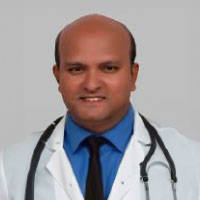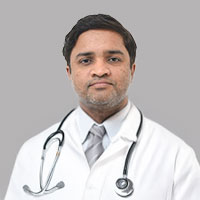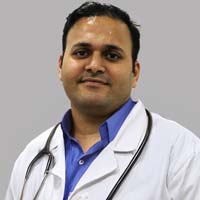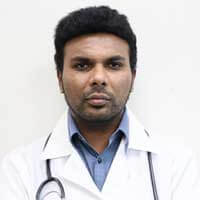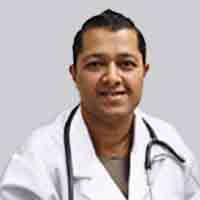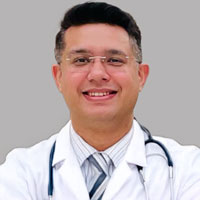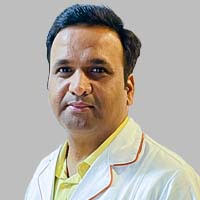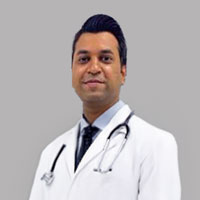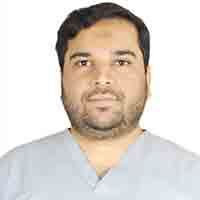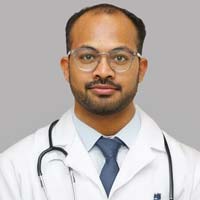Preparation before adenoidectomy surgery
Once a patient’s diagnosis and treatment plan have been confirmed and they’ve made up their minds regarding a treatment plan, they can start their pre-operative preparations for the surgery. Common pre-operative preparations before adenoidectomy surgery are:
Doctor Consultation
- Make sure your doctor is aware of any medical or other allergies you have. You should also inform them of any medicines you are currently taking so they can ensure they won’t react to the treatment.
- You should also inform the doctor if you have any bleeding or clotting disorders that you are taking medicines for. You may have to cease taking blood thinners at least 2-3 days before the surgery to prevent complications.
- Consult the doctor before taking any medicines for your pain or discomfort. Painkillers like ibuprofen and aspirin affect blood clotting and can lead to severe complications during the surgery.
Diagnostic Evaluations
- Throat culture: A throat swab is obtained to examine the throat discharge to determine the bacteria/virus causing the infection.Â
- Blood culture: Blood culture helps assess the severity of the infection and to determine if the infection has spread to the blood.
- X-rays: X-rays help in determining the size of the adenoid glands, as well as the extent of the infection and inflammation present. They also help assess if the patient has mineral deposits like tonsil stones complicating the condition.
- Endoscopy: In endoscopy, a camera/endoscope is inserted into the throat to visualize the throat area to determine the extent and severity of the condition.
Day before the surgery
Adenoidectomy is performed as a daycare surgery, so the hospitalization for the surgery is very brief. Most patients get operated on the same day they are hospitalized. On the day before the surgery, the patients are advised to confirm their appointment and follow the doctor’s instructions regarding diet and medicines.
The patient should take their medicines as prescribed so that their adenoids aren’t too swollen before the surgery. They should also not eat anything after midnight on the day before the surgery if the surgery is to be performed under general anesthesia.Â
Day of the surgery
On the day of the surgery, the patient is admitted to the hospital. Then, they are prepped for the surgery and the attendant/nurse records their vital signs to ensure they are in optimum condition for the surgery. Then, they are anesthetized.
The type of anesthesia also depends on the type of surgery the patient is undergoing and the severity of the condition. Commonly, especially in children, the surgery is performed under conscious sedation or mask anesthesia, and IV or intubation is not generally required.
Surgical techniques
If the patient has a tonsil infection in addition to adenoiditis, the doctor usually recommends a T&A surgery, also known as an adenotonsillectomy. During the procedure, the surgeon will remove both adenoids and tonsils at the same time using a coblator or electrocautery device for better recovery.Â
The most common adenoidectomy surgery procedure are:
During open surgery, the surgeon uses a small tool to keep the patient’s mouth open and uses a spoon-shaped curette or a knife to cut out the infected adenoid glands. Some surgeons combine the procedure with electrocautery to heat the incisions and seal them to control the bleeding. Once that is done, the incision is covered with absorbent packing material to isolate it for healing.
Coblation adenoidectomy procedure is very similar to open adenoidectomy. The major difference lies in the cutting tool. For coblation surgery, the surgeon uses a low radiofrequency emitter to cut the tissues, along with saline irrigation to prevent burning the tissues surrounding the adenoids.Â
Post-procedure
Adenoidectomy is a daycare surgery, so the hospitalization period is short and most patients recover completely within 1-2 weeks of the surgery. Postoperative care after adenoidectomy can be described as:
1. Hospital Care
Once the surgery is done, the patient is moved to a recovery ward for 1-2 hours observation period to ensure there are no complications from the surgery or anesthesia. Then, the doctor will provide at-home care instructions to the patient to ensure proper recovery. The patient can visit the hospital for follow-up consultations as directed.Â
2. Home Care
Most patients recover from adenoidectomy within 1-2 weeks. Most patients have a mild fever after the surgery for the first 1-2 days due to surgical stress on the patient’s body. Recovery is usually faster in kids than in men. You can improve your recovery by following the given tips:
- For the first 1-2 days, massage the surgical area using an ice pack to reduce the swelling. Once the postsurgical swelling has disappeared, the patient should use a heat pack to improve healing.
- Drink at least 7-8 glasses of water every day. You can also add liquids like water, fruit juice, Gatorade, Jell-O, apple sauce, warm chicken or beef broth, etc., to ensure you are well hydrated.
- Start with a liquid or semi-solid diet after the surgery. You can eat foods like pudding, soup, gelatin, mashed potatoes, yogurt, boiled vegetables, etc. Once the incision has healed, you can start eating solid foods again.
- Don’t consume any hot, spicy, crunchy, or fried foods to make sure your throat heals well.Â
- You can use a humidifier to improve your breathing.
3. Physical Activity
Don’t strain your throat till you have recovered. Avoid playing contact sports, strenuous exercises, heavy weightlifting, etc., during recovery. If the healing incisions are disturbed, they can reopen and lead to further delay in recovery.Â
4. Medications
Take your medicines on time as prescribed by your doctor. Most patients are prescribed over-the-counter anti-inflammatories, antibiotics, and painkillers to manage the pain and prevent infections. If you are taking any blood thinners that you had to stop for the surgery, you can start them again 2-3 days after the surgery.
5. Follow up
Follow-up appointments are usually scheduled 1-2 weeks after hospital discharge. During the follow-up, the surgeon assesses the condition of the suture, the progress of healing, etc. Most patients need 2 follow-up appointments after the surgery.
Risks and Complications after Adenoidectomy
Adenoidectomy is generally a very safe surgery and very rarely leads to any complications. However, in some cases, it can lead to complications like:
- Failure to relieve symptoms: While adenoidectomy is an effective treatment for adenoid infections, it can fail to relieve ear, sinus, and throat infections completely. In such cases, the patient may need additional treatment for effective relief.
- Continued breathing problems: Since adenoids are located so close to the air canal, if the surgery is not performed correctly or there are any complications, it can lead to more breathing problems.
- Uncontrolled hemorrhage: A little bleeding and discharge from the incision are normal, but if there is too much bleeding, it is a sign of surgical complications and should be treated immediately.
- Permanent change in the voice quality: Adenoid removal surgery can affect the pitch, tone, and articulation of the patient’s voice due to its effect on the patient’s breathing. Moreover, an inexperienced surgeon can damage the vocal cords during the surgery and lead to permanent damage to the patient’s voice.
- Infections: Infection of the surgical incision is common if the patient skips their antibiotic medication or if they dont take proper care of the healing incision. Redness, swelling, pain, and pus discharge are the most common signs of an infection. Make sure you consult an ENT specialist immediately if there are any signs of an infection.
- Anesthesia-related complications: Since IV and intubation are not performed during the surgery, anesthesia-related complications are rare after an adenoidectomy. However, if the patient shows signs of mental confusion, drowsiness, breathing difficulty, etc., make sure you consult your surgeon immediately.
Make sure you connect with your surgeon and discuss all the possible complications of the surgery so that you are fully prepared for the surgery. While adenoidectomy is not a fail-safe guarantee for relieving throat infections or breathing issues, it is very effective in eliminating adenoid infection and inflammation. Consult an expert ENT specialist near you if you have infected adenoids.
















































































